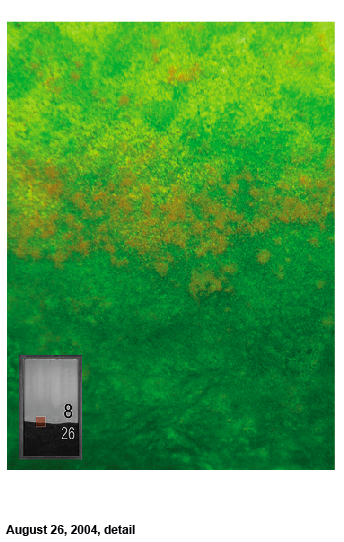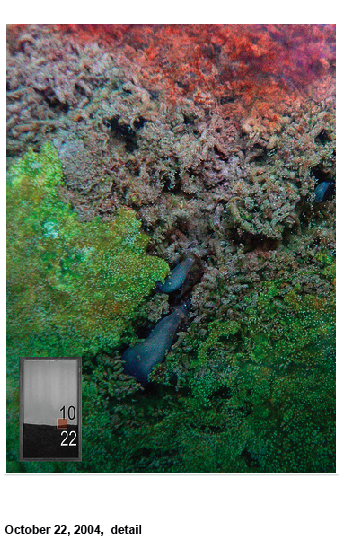See Also:
"Winogradsky Rothko: Bacterial Ecosystem as Pastoral Landscape," journal of visual culture, Volume 7(3), December 2008. pdf
More pictures can be found here.
Review in 2007 by Buzz Spector
Acknowledgements:
Steve DeGloria and Susan McCouch who each ratcheted up support for this installation. Cornell Council for the Art and the Cornell College of Agriculture and Life Sciences for financial support.
Tom Besemer for excellent craftsmanship. My Janes and Johns that kept me steady through the first version and onto the second. and Buzz, because he is a bee that continues to help me to see myself.
steel, glass, pond water, mud
32 3/4" x 56" x 2 1/2"
Ithaca, NY USA
Installed outside, a steel and glass frame – made in the dimensions of Mark Rothko’s Untitled, 1949 – was filled with local mud and water from Beebe Lake. By applying a microbiological identification technique developed by a 19th century soil scientist, Sergei Winogradsky, pigmented bacteria existing in the mud and water composed the palette. Though difficult to see individually, microorganisms capable of producing pigments through photosynthesis are found in all kinds of soils. Light intensity, access to nutrients, and oxygen levels all define which position in the soil column a given bacterium will be able to grow. As these bacteria colonize their optimal zones, they change their environments by depleting their resources and releasing by-products. As a given species reaches its carrying capacity, the no longer hospitable environment to the original colonizer may now be the optimal environment for a potential predecessor to that zone. Exposing the cross-section of soil to sunlight, traditionally unseen organisms become indicators of the complex biochemical succession of a soil landscape thus creating an evolving color-field of living pigments.








